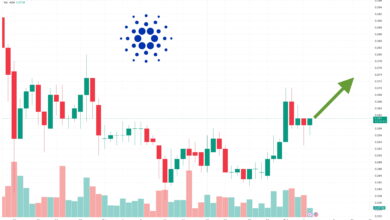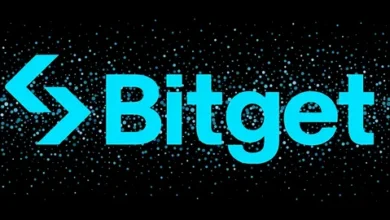
Dogecoin Price Live Charts and Marketcap
The cryptocurrency market has witnessed remarkable transformations since its inception, with Dogecoin (DOGE) emerging as one of the most fascinating digital assets in the ecosystem. Created as a meme cryptocurrency in 2013, Dogecoin has evolved into a serious investment vehicle with substantial market presence. Currently trading at approximately $0.24-$0.26 USD, with a market capitalization ranking it among the top 10 cryptocurrencies globally, DOGE continues to capture investor attention through its unique community-driven approach and celebrity endorsements.
Understanding Dogecoin price movements requires a comprehensive analysis of various market factors, technical indicators, and real-time data interpretation. The live charts provide crucial insights into price volatility, trading volumes, and market sentiment that directly influence investment decisions. With 24-hour trading volumes exceeding $4.7 billion USD, representing significant increases in market activity, Dogecoin demonstrates substantial liquidity and investor interest.
This comprehensive guide explores the intricacies of Dogecoin price tracking, market capitalization analysis, and the tools necessary for effective cryptocurrency monitoring. Whether you’re a seasoned trader or newcomer to digital assets, understanding how to interpret live price charts and market data is essential for making informed investment decisions in the volatile cryptocurrency landscape.
The Dogecoin market operates 24/7, creating opportunities and challenges that require constant monitoring and analysis. Professional traders and retail investors alike rely on sophisticated charting tools and real-time data feeds to navigate price fluctuations and identify profitable trading opportunities. This article provides detailed insights into the most effective methods for tracking Dogecoin’s live price and understanding its market dynamics.
What is Dogecoin and Why Track Its Price
The Origins and Evolution of Dogecoin
Dogecoin represents a unique phenomenon in the cryptocurrency world, originating from an internet meme featuring a Shiba Inu dog. Despite its humorous beginnings, the digital currency has developed into a legitimate financial instrument with real-world applications and significant market value. The coin’s inflationary supply model differentiates it from Bitcoin’s deflationary approach, making DOGE particularly interesting for long-term economic analysis.
The cryptocurrency’s community-driven nature has fostered widespread adoption and integration into various payment systems and charitable initiatives. Major corporations and payment processors have begun accepting Dogecoin as a legitimate payment method, further solidifying its position in the digital economy. This mainstream acceptance directly correlates with price stability and increased trading volumes observed in recent market cycles.
Importance of Real-Time Price Monitoring
Live price tracking serves multiple critical functions for Dogecoin investors and traders. Real-time data enables immediate response to market movements, facilitating optimal entry and exit points for trading positions. The cryptocurrency market’s volatility demands constant vigilance, as significant price movements can occur within minutes or hours.
Professional trading strategies rely heavily on technical analysis derived from live chart data. Price patterns, support and resistance levels, and momentum indicators provide valuable insights into future price directions. Without access to real-time information, traders risk missing profitable opportunities or failing to protect their investments during market downturns.
Dogecoin Live Charts

Essential Chart Types and Timeframes
Dogecoin live charts come in various formats, each serving specific analytical purposes. Candlestick charts provide comprehensive information about opening, closing, high, and low prices within specific timeframes. Line charts offer simplified price trend visualization, while area charts help identify overall market sentiment through color-coded representations.
Different timeframes reveal distinct market behaviors and trading opportunities. Short-term charts (1-minute to 1-hour) assist day traders in identifying quick profit opportunities, while longer timeframes (daily, weekly, monthly) help investors understand broader market trends and make strategic investment decisions. Technical analysts utilize tools such as RSI, MACD, and Fibonacci retracement levels to forecast price changes, making comprehensive chart analysis essential for successful trading.
Key Technical Indicators for DOGE Analysis
Moving averages represent fundamental tools for Dogecoin price analysis, smoothing out price fluctuations to reveal underlying trends. Simple moving averages (SMA) and exponential moving averages (EMA) provide different perspectives on price momentum and trend strength. When current prices trade above moving averages, it typically indicates bullish sentiment, while prices below suggest bearish conditions.
Relative Strength Index (RSI) measures price momentum and helps identify overbought or oversold conditions in the Dogecoin market. RSI values above 70 suggest potential selling opportunities, while values below 30 indicate possible buying opportunities. However, during strong trending markets, these traditional overbought/oversold levels may require adjustment for accurate interpretation.
Volume analysis provides crucial confirmation for price movements and trend sustainability. High trading volumes during price increases suggest strong buyer interest and trend continuation, while high volumes during price decreases indicate significant selling pressure. Recent market data showing 199.20% increases in 24-hour trading volumes demonstrates the importance of volume analysis in understanding market dynamics.
Dogecoin Market Capitalization Analysis
Calculating and Interpreting Market Cap
Market capitalization represents the total value of all circulating Dogecoin tokens, calculated by multiplying the current price by the total supply. With approximately 150.9 billion DOGE tokens in circulation and a market cap ranking it among the top 8-10 cryptocurrencies globally, understanding this metric provides valuable context for investment decisions.
Market cap comparisons help investors assess Dogecoin’s relative position within the broader cryptocurrency ecosystem. Higher market capitalizations typically indicate greater stability and reduced volatility, while smaller market caps may offer higher growth potential with increased risk. This relationship directly influences trading strategies and portfolio allocation decisions.
Market Cap vs. Trading Volume Relationships
The relationship between market capitalization and trading volume reveals important insights about Dogecoin’s liquidity and investor sentiment. High trading volumes relative to market cap suggest active trading and strong market participation, while low volumes may indicate reduced interest or potential price manipulation risks.
Dogecoin’s substantial market cap, combined with high trading volume, creates favorable conditions for both retail and institutional investors. This liquidity ensures that large transactions can be executed without significantly impacting the market price, making DOGE attractive for various investment strategies and portfolio compositions.
Top Platforms for Tracking Dogecoin Price
![]()
Professional Trading Platforms
CoinMarketCap and CoinGecko represent industry-standard platforms for cryptocurrency price tracking and market analysis. These platforms provide comprehensive data, including live prices, market capitalizations, trading volumes, and historical price charts. Their mobile applications enable real-time monitoring and alert systems for significant price movements.
TradingView offers advanced charting capabilities and social trading features that enhance Dogecoin analysis. The platform’s professional-grade tools include custom indicators, drawing tools, and backtesting capabilities that support sophisticated trading strategies. Integration with major cryptocurrency exchanges enables direct trading execution from the charting interface.
Exchange-Based Tracking Tools
Major cryptocurrency exchanges like Binance, Coinbase, and Kraken provide integrated price tracking and analysis tools for their users. These platforms offer real-time price data, order book information, and trading history that support informed decision-making. Exchange-based tools often provide the most accurate pricing information since they reflect actual trading activity.
Bybit and other derivatives exchanges offer additional analytical tools focused on futures and options trading. These platforms provide funding rates, open interest data, and liquidation information that help traders understand market sentiment and potential price catalysts.
Real-Time Data Sources and APIs
Cryptocurrency Data Aggregators
Professional traders and developers rely on API services for accessing real-time Dogecoin price data and integrating it into custom applications. CoinGecko API, CoinMarketCap API, and CryptoCompare API provide comprehensive data feeds including price, volume, market cap, and historical information.
These data sources enable automated trading systems, portfolio tracking applications, and custom analysis tools. API integration allows for real-time alerts, automated position management, and sophisticated backtesting of trading strategies using historical DOGE price data.
Blockchain Data and On-Chain Analytics
On-chain analysis provides unique insights into Dogecoin’s network activity and adoption metrics. Blockchain explorers track transaction volumes, active addresses, and network hash rates that correlate with price movements. These fundamental metrics often precede significant price changes, providing early warning signals for astute analysts.
Whale watching involves monitoring large Dogecoin transactions and wallet movements that can impact market prices. Professional analytics platforms track these movements and provide alerts when significant transfers occur, helping traders anticipate potential price volatility.
Technical Analysis Strategies for DOGE
Chart Pattern Recognition
Price patterns in Dogecoin charts provide predictive insights into future price movements. Common patterns include triangles, head and shoulders, double tops/bottoms, and flag formations. Each pattern carries specific implications for future price direction and provides target prices for profitable trading opportunities.
Support and resistance levels represent price zones where DOGE historically experiences buying or selling pressure. These levels help traders identify optimal entry and exit points while managing risk through strategic stop-loss placement. Breaking through significant resistance levels often signals strong upward momentum, while breaking support suggests potential downward pressure.
Momentum and Trend Analysis
Trend analysis forms the foundation of successful Dogecoin trading strategies. Identifying whether DOGE is in an uptrend, downtrend, or sideways consolidation phase helps determine appropriate trading approaches. Trend-following strategies work best during strong directional movements, while range-trading strategies suit sideways markets.
Momentum indicators like MACD, Stochastic, and Williams %R help identify trend strength and potential reversal points. These indicators provide early warning signals for trend changes and help traders adjust their positions accordingly. Current technical analysis indicates potential consolidation near $0.23 with possible bullish breakouts if volume surges.
Market Factors Affecting Dogecoin Price
Social Media and Celebrity Influence
Social media sentiment plays a crucial role in Dogecoin price movements, particularly tweets and endorsements from influential figures. The cryptocurrency’s meme-based origins make it particularly susceptible to social media-driven price volatility. Monitoring Twitter, Reddit, and other platforms provides valuable insights into upcoming price catalysts.
Celebrity endorsements have historically created significant price spikes in DOGE, demonstrating the importance of social sentiment in cryptocurrency valuation. Professional traders incorporate social media monitoring into their analysis to anticipate and capitalize on these sentiment-driven price movements.
Regulatory and Adoption News
Regulatory developments significantly impact Dogecoin’s market capitalization and price stability. Positive regulatory clarity typically leads to increased institutional adoption and price appreciation, while regulatory uncertainty can cause selling pressure and reduced trading volumes.
Corporate adoption and payment integration announcements create long-term value propositions for Dogecoin. Major retailers, payment processors, and financial institutions accepting DOGE demonstrate growing mainstream acceptance and utility, supporting higher price levels and reduced volatility over time.
Future Outlook and Price Predictions
Analyst Forecasts and Market Projections
Professional analysts forecast DOGE cryptocurrency prices ranging from $0.16 in 2024 to $0.28 in 2026, reflecting moderate growth expectations based on technical analysis and fundamental factors. These predictions consider market adoption rates, regulatory developments, and broader cryptocurrency market trends.
Long-term projections suggest DOGE values may increase by 5% and reach $0.40 by 2030, indicating potential for sustained growth despite the cryptocurrency’s inflationary supply model. However, these forecasts require regular reassessment based on evolving market conditions and adoption metrics.
Technology Development and Network Upgrades
Dogecoin’s blockchain continues evolving with improvements to transaction speed, security, and scalability. The network offers fast transaction speeds, making it attractive for everyday payments and microtransactions. Ongoing development efforts focus on maintaining this competitive advantage while implementing additional features.
Future network upgrades may include smart contract capabilities, enhanced privacy features, and improved interoperability with other blockchain networks. These technological improvements could significantly impact DOGE’s utility and market valuation, creating new use cases and driving increased adoption.
Also Read: American Securities Regulator Sues Dogecoin ($DOGE) Enthusiast Elon Musk.
Conclusion
Dogecoin price tracking and market capitalization analysis require a comprehensive understanding of multiple data sources, technical indicators, and market factors. Successful DOGE investors and traders combine real-time price monitoring with fundamental analysis and social sentiment tracking to make informed decisions in this dynamic market environment.
The cryptocurrency’s unique position as both a meme coin and a legitimate digital asset creates interesting investment opportunities and challenges. Live charts and market data provide essential tools for navigating Dogecoin’s volatility while identifying profitable trading opportunities and long-term investment potential.
As the cryptocurrency market continues maturing, Dogecoin’s role may evolve from speculative asset to established digital currency with widespread adoption. Monitoring live price movements, understanding market dynamics, and staying informed about technological developments will remain crucial for anyone seeking to profit from or understand this fascinating digital asset.
The future of Dogecoin depends on continued community support, technological advancement, and broader cryptocurrency market acceptance. By utilizing the tools and strategies outlined in this guide, investors can better position themselves to capitalize on DOGE’s unique market characteristics while managing the inherent risks of cryptocurrency investment.







